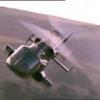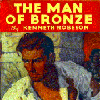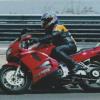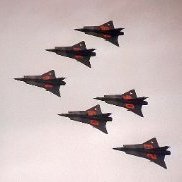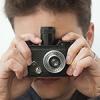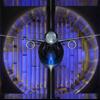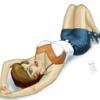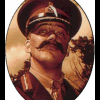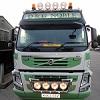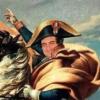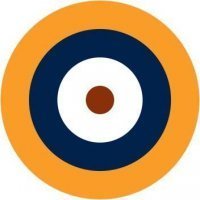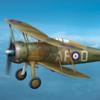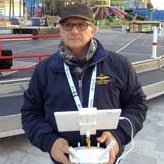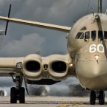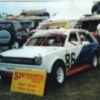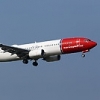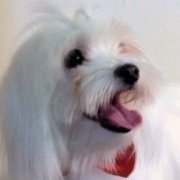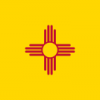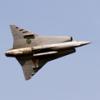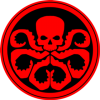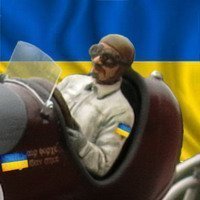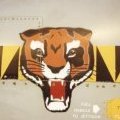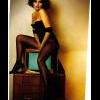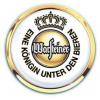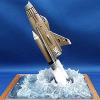Leaderboard
Popular Content
Showing content with the highest reputation on 31/10/14 in all areas
-
Boeing B-29A Superfortress Joltin Josie, the Pacific Pioneer 1498th Bomb Group, 873rd Squadron US Army Air Force Saipan, Mariannas, November 1944. Those who attended last week's Yeovilton Museum show will have seen this monster in the flesh. The old Airfix B-29 is the only kit I can ever remember giving up on. Mind you I was less than 10 years old at the time. So, 40+ years later I kind of thought I could hack it and have attempted another one. In the end I won, but it fought all the way and whilst I was never going to give up, I'm not entirely happy with the outcome. That said, the kit really is a lot of fun to build, with all of its interior parts and working features (all of which, except the bomb bay doors still move on my kit!). Unfortunately, parts fit is not overly good, especially of the fuselage halves, engine nacelles and the nose transparencies. I went for the Tinian/Saipan option on the decals, rather than the box illustration, mainly because of the colourful "Joltin Josie" nose art, but also to fit my 70th Anniversaries theme - Josie was the first B-29 to arrive in the Pacific Theatre as part of the massive force established on Saipan and Tinian in November 1944, in order to conduct round the clock bombing of the Japanese mainland. The silver colours are a mix of Humbrol Metalcote and Steel, all brush painted as normal. It took a long time and a lot of frustration to get an even finish. Now where on earth am I going to display/store it!!! FredT And here she is on the table at Yeovilton last Saturday:9 points
-
Hi folks, I finished this wee plane for club night on Wednesday and managed to take a couple of pictures today. I'll do some more but I ran out of light! This is (confusingly) from an early boxing of the Czechoslovakian Service Dual Combo kit. So it's not the one of which they made a handful and then retired, but the one after that. Except that the early version (sprues without three bumps on) is somehow wrong and Eduard will send you a new one if you post them the sprues. They mention issues in the forward fuselage construction. I did some dry-fitting and thought it seemed tight but OK, so opted to build mine rather than exchange it. In the end I did have to do some sanding around the nose ring so it's possible that's been fixed. There's also no positive locating socket for the nose gear, which is odd. I thought I'd glued it in place successfully but it fell out after a trip to the club and might be a bit off in these pictures. I didn't mind since I got the kit for cheap from HLJ, and it came with nice resin rockets and pylons, plus a full set of etch for the cockpit and masks. The masks were difficult to use successfully (too many pieces) and needed some re-masking and touch ups to straighten the frames afterwards, but the cockpit parts are lovely and weren't too hard to add: I ditched the resin pylons since the fit to the wing was poor and grafted the plastic pylons to the resin rails. I also left off the sway braces (?) since I couldn't see a good way to fit them. Painted with Alclad, not sealed (except for a bit of Klear Flat over the decals) and weathered gently with - wait for it - MIG pigments and MIG washes. Oh dear... I think this is the first 1/72 plane I've finished since I was a kid. I'm surprised at how small it is, and it was quite difficult in places (I did a poor job on the antenna and had some decal trauma) but it looks nice in the pictures. And you can easily frame things so that you can't see the edges, which is more than I can say for my larger models. The last picture is on the base I made for my Tu-160 last year, but it seems to fit nicely! (Edit: forgot to add that there's a build thread on Britmodeller) Thanks for looking, I hope you like it! Cheers, Will7 points
-
6 points
-
Hi guys this is another my model, Jagdpanther ausf G Early from Dragon. Some details are in scratch. The grilles and Crew are from Royal Model. and this is the diorama "the little big man" House in scratch, wood fence Miniart, little big man MB. Complete wip on my website: http://michelangelosicilia.webnode.com/news/diorama-the-little-big-man-/ I hope like it. Michelangelo6 points
-
Special paint Mirage 2000C fpr the disbandment of EC 1/12 Cambresis from Cambrai Airbase in north-eastern France in 2012 Syhart needed a bit to release the appropriate decals for these wonderful scheme, but they are available now! so here my in-flight model, with quite some aftermarket put to hopefully good use for the in progress build, see here: http://www.britmodeller.com/forums/index.php?/topic/234961913-mirage-2000c-heller-last-flight-ec-112-cambresis-148-decals/ edit: maybe some tiny bit of photoshop!5 points
-
A couple diddy models from my built archives. Built these afew years ago. Both 1/144th scale and by Sweet from one box.5 points
-
Hi, A second Ju-86 of my shelf. Together with high altitude recce version (Ju 86 R1, which I posted recently) I did also much smaller conversion of civil Z-2 into Z-7 converted then into bomber in South Africa. Depicted "647" was one of such machines. She served in 12 Sq of SAAF, Ethiopia 1941 acting against Italians, I guess. There are discrepencies in sources on top wing roundls ("A1" or "B" - I have chosen A1 roundels, since on some poor quality photos those marks has some bright fragments which can be interpreted as sight of white form A1 mark. Now there is a conversion by Kora, but I did it in 2002, and those days I did not know if there was any ready conversion, so it own work. The nose symbol is hand painting on decal, other decals are from a drawer. Brush painting. Please enjoy and comments are welcome Regards Jerzy-Wojtek4 points
-
I wasn't sure how my style of aircraft modelling would go down in the main forum, but Procopius seemed to think it was OK, so here goes: I have taken massive liberties with the scheme.....Apologies to the purists, this is for a diorama and it's meant to be fun (and to learn some new techniques)! I once joked that you would never paint a biplane using the same techniques that you would on a tank.....Then I had a think about it and decided it might be fun to find out the truth of the matter! I also need to learn rigging and I can prevaricate no longer.....Whether there will be further updates to this build rather depends on the behaviour of my spiders! Wish me luck, it's my first time!4 points
-
That Quickboost seat (e.g. seen on seat sides) looks very thick for 1/32 scale. The Barracuda one looks much thinner. Also the flare rack may or may not be suitable for your aircraft/time period. As a reformed wargaming figure painter, I have painted a lot of straps and things already in place. (just seen Ben got his reply in before me, I'd do it in a very similar way to his method) The way I do it is the paint the base colours of the big parts- so the brown leather for the padded back, the interior green of the seat (if depicting metal seat, red brown for the composite ones), biscuit-colour for belts. I'd then do a wash or two over everything (e.g. Citadel tan coloured and brown washes)- allowing small pooling of wash in shadow areas, and using a brush wet with water to remove overly dark areas of wash left on high areas. Once that is completely dry, drybrush the leather with a lighter leather-coloured mix (even up to near white will work if you use nearly nothing on the brush- literally use a dry brush, I find using it on the skin of my thumb as a test is good- should just highlight the highest points in the skin texture. For highlighting the belts themselves, I find you can get more punchy contrast by using a superfine brush and painting (wet brush with thinned paint, but tiny amount on brush) very carefully lines along the edges, and where there are bumps with a lighter shade, working up to tiny areas that get spots of white. Shade the low areas with very thin brown pin wash (not everywhere). To make the belts really stand out from the brown leather back (they will tend to blend in, particularly if you weather heavily with the washes), paint really thin lines of black around them, with well-thinned paint. You generally have to touch these up with the base colours to get super thin lines. I normally do buckles and eyelets in brass, or sometimes silver, not sure which would be right for when and what actually! These can also get black-lining to make the stand out Here are examples painted like this (Typhoon in 1/48 and 1/32): I tidied up the black-lining around the belts, as seen in the second photos of the 1/48.4 points
-
4 points
-
Hi ! Some days ago, Mixup_1 asked a tutorial about "How to photograph a model on a diorama". In spite of my poor English (sorry) I will try to answer to Mixup_1. Warning : This is my personal method - It's certainly not the best ever and i'm sure that there is a lot of other way to do... (if you have a different procedure, feel free to share it with us !) Well... Let's go... : Step 1 : The ground : My parking area is made from 6 sheets of paper on which I printed an image of concrete runway. These 6 sheets of paper are simply stuck on a correx pannel cut at the good size (Correx is a polypropylene "double wall" sheet used for packaging, you can also find it with printed commercial advertisements and hung at the ceilings in many supermakets - Correx is also know as : Akylux) This is the result : Step 2 : The landscape My landscape is also printed on a couple of sheets of paper. I used some screenshots taken from the mission editor of a combat flight simulator, but if you have the chance to have a lovely real landscape near you, you can use some pictures of it, it will look much more real The two sheets of paper are stuck on a simple foam piece that must be thick enough to be stable once put "on the ground" (i used a 50 mm thick styrofoam bar and i stuck the landscape with adhesive tape) The important thing is that the bottom part of printed landscape must overtake the styrofoam just like this : and allows the background to be slightly bent Why ? That's rather simple : I want the junction between the runway and the landscape to be as least visible as possible so i will "bend" the bottom of the lanscape and put the overtaking part under the correx sheet and it will allows you to set the horizon line's height just by moving the foam block back and forth. A smooth transition between the background ant the runway is also created by the bent background and allows it to become invisible Step 3 : The model and the photographer a - Put the model near the back ground but not to close (try to avoid any visible drop shadows of the model on the landscape.) b - Always put your camera on a tripod if the shutter speed decrease under 1/60 second Step 4 : The camera settings a - Except in a few rare cases, i never use the embeded camera's flash light - i better use a high ISO value - Caution : i recommand to perform some tests to see how your camera is able to handle the "high iso". Most of the standard camera don't like iso value higher than 800. Keep in mind that the most the ISO value will be high, the most your picture will be covered with film grain. b - Because all the wide angle lens deform the image, I always try to use the camera zoom to frame the picture (For those who use a reflex camera : I often set my zoom from 50mm to 170mm and even, when needed, i increase the zoom up to 250mm) c - I want a sharp focused image from the foreground to the background (i.e. a long Depth of field) so i set my camera on the "aperture mode" (A Mode) and i set the value on the higher number available. (The more this value is high, the longer will be the depth of field, the longer will be the exposure time - That's why the use of a tripod is compulsory.) For example : Here, the zoom is set on 44mm, iso is set on : 2500, Aperture is set at the max allowed value : F22 and the camera processor calculated an exposure time of : 2 seconds This is the result - picture taken indoor with incandecent light. Not very good, a bit blurry, not so realistic colors... The same subject but this picture was taken outdoor (in the garden) under a late afternoon warm sun light : i managed to use a bigger zoom value, The light is better as the picture's sharpness Keep in mind few things : - The most you will zoom, the most you will loose light and so the longer will be the exposure time - The light quality or setting are very important : * Always try to shoot picture under the sun light * Always take your pictures with the sun in your back or on your side * Choose the hours that will allow the smaller droped shadows * Try to frame your picture to simulate a realistic point of view on the model * Practice, practice, practice.... I hope that can help some of you and that my explanations was understandable.... Best regards D.C.3 points
-
Well I almost completely forgot about/missed this one. Like the majority probably will, I’m going for an Eduard model as well, though mine will be the 1/48 ProfiPACK G4. And being a Bf100 it was only even going to be a nightfighter for me and not just any, supposedly the last aircraft ever flown by Major Heinz-Wolfgang Schnaufer, the greatest Night Fighter pilot of all time (there’s a lot of debate whether it was C3+BA). Along with all the lovely gear Eduard supplies I’m adding their details set and Master models beautiful FuG 218 antenna set. As the model doesn’t support ( ) the FuG218 I had to steal the mast for my Dragon Ho229B. For decals I’ll be using Peddinghaus’s beautiful decal set, plus I got a feeling I may have ordered some resin wheels as well!! I’m really looking forward to building this one but am already super stressed over time! I know it’s 3 months but I’m about to go back to 3w/1w roster so will be away from home most of the time. It works out I have 15 full days at home until the February finish and no I can’t spend all that time locked away building...would be trouble if I did. So there will be a mad rush over the first few days of the build to get all the basics done, no step by step build this time!! :frantic: :frantic: Roll on start time!!!!3 points
-
I will have a set of paint masks for the beautifil big Tiffie on sale at Telford: Here is the breakdown of the price of each element of the set of masks for the Airfix 1/24 scale Hawker Typhoon: Camouflage - £12.50 D-day stripes - £11.25 Roundels and fin flash - £14.50 Canopy clear parts and wheels - £3.50 Yellow leading edge - £1.50 This is a total of: £43.25 I will be producing a limited number of 100 sets at a price of £28.00 for the set.(that is a little better than a 35% discount) Yes I must be mad! The set includes very comprehensive instructions. On top of this blatant attempt to encourage more modellers to try paint masks there is more! If you purchase a set I will custom produce a set of codes and serials for the aircraft of your choice for 50% of my normal minimum order value of £10.00, so £5.00. I will also produce other specific items for your chosen subject, but there will be an extra cost for those, I'm not completely mad! I will also include, at no extra cost, blanks to mask off the fuselage roundels For the D-Day stripes) and wing walkways (see my build), if you require them! Maybe I am completely mad They will be available from the start of the Scale Model world show, the 8th of November. So pick them up at the show, I will have 30 sets there, or email me at [email protected] and I will send you an order form. I expect to have a lot of interest in this set so bare with me if I don't send the order form by return, but don't worry once I get your email request you are on the list. If you have sent me an email about interest in this set then please send me another email to request an order form. I will require a separate order form to produce the codes and serials of your choice; for which I will require enough information to be able to produce the markings of your choice, so gather those before you send back the second order form. Also be aware that I will essentially have 100 sets of add on markings to produce so a bit of patience please. My Typhoon at the moment, using the set:3 points
-
Hi all, thought it was about time to post something that I've got round to finishing this year, (actually I've finished several but as they're all destined for magazine articles I can't post them prior to publication on pain of death... or something far worse......cessation of chocolate rations !! ). I built this one for our Bomber Command sig as I noticed that we had a distinct lack of Canberra's in the collection and for such an important type that's almost unforgivable ! This is only the second Canberra I've built, first being the old Airfix B(1)6 way back so it would be interesting to see how this one stacked up. A lot of folks probably know that BC operated the bomber variants B.2/B.6 in several squadrons but maybe not too many are aware that they also operated the recon versions too, albeit only briefly. 58 squadron was the first squadron to receive the new PR.9 variant flying them out of Wyton from 1960-1963 before the squadron was disbanded and the 6 aircraft given over to no's 13 and 39 squadrons. Another reece version served with 58 squadron at the time and that was the PR.7, (which I hope to build a bit later). The primary role of 58 at this time was to provide potential target photo route mapping for the V-Bombers, (which became more important with the introduction of Blue Steel), assisting the PR Valiants of 543 squadron with shipping reconnaissance trials and monitoring the movements of Russian naval vessels during the Cuban crisis...a busy time indeed ! As for the Airfix kit well it isn't that bad really though one or two things really stuck out when I started looking through the box. Obviously everyone whose built one is aware of the rudder problem and that was easily fixed with a resin replacement from SBS models. Another problem which only became apparent when I came to dry fitting the undercarriage is that it sits way too high at the back !...the legs seemingly in the unloaded position. Once these were cut down to size I decided to replace the whole item with scratchbuilt copper and ali tubing so that I could adjust the 'ride height' accordingly. Another problem were the awful panel lines the prominent ones being filled with stretched sprue, layered with Mr Surfacer 500 and then rescribed in places very lightly with the help of John's (canberra kid) drawings which proved invaluable. Another mighty thanks must go to Dennis, (sloegin57) who supplied several lovely photos of the early PR.9's that he took at Luqa at the time ......these were again really useful in determining the right amount of weathering of the high speed silver paint. If the photos of 58 squadron aircraft are anything to go by their aircraft were kept pretty clean whilst in their employ over here...though that changed later when they were at the mercy of the med sun and sea air....... The earliest PR.9's didn't have the same aerial fit as the later aircraft and were remarkably smooth airframes as befits their high speed role. Talking of roles another error that is apparent when you turning the kit over is that the central bomb bay photo camera bay is incorrect for an early mark PR.9. The large centre 'box' didn't exist so was filled and the spare bomb bay section that comes in the box cut up and added to create new doors ....in some photos there appears to be a dark oblong section on the left hand door but I haven't found out what this was for, whether it's a cover for a camera bay or what I really don't know ! in addition the front engine nacelles have the vents incorrectly moulded one to the left and one to the right of the forward engine nacelles...they should both be on the right side, and be smaller than provided in the kit, (my micro chisel and careful masking came in handy here).......... The elevators have been left bright aluminium as they were quite often replaced in service with freshly painted items... The real thing weathered very quickly particularly the high speed silver paint so the airframe was finished using Alclad, matt aluminium, white aluminium, airframe aluminium, steel and magnesium the detail stuff added using Gunze paints. Decals were a mix of Airfix, old Matchbox, (for the correct black hatching over the navs hatch, not red as supplied in the airfix kit), Model Alliance rounded serials to model XH136, national markings from Xtradecals and additional stencils from a generic set... All in all good fun but quite protracted as more things came to light. Quick list of things that needed doing to the model, The fin fillet needs cutting back and reshaping and the elevator tips need rounding off.... Cockpit, scratchbuilt new interior, Eduard pre painted set used, seat from CMK..... New rudder from SBS models. Engine nacelle oblong intakes (near intakes) reduced in size , the one on the right engine filled and moved to its correct position on the right hand side, (micro chiselled). Most prominent panel lines filled and replaced with stretched sprue and Mr Surfacer, then rescribed lightly into correct positions. Undercarriage scratchbuilt using brass rod and ali tubing to allow model to sit correctly....... Bomb bay central camera box removed and faired over...small strakes added at the rear underside., (also fuel dump pipe and small aerials added). Wingtip lights...... micro drilled into clear parts and filled with red and green food dyes to simulate lights.. Little Cars 4mm clear lenses in the camera bays... Thanks again to canberra kid and sloegin for their help with this one, Next up will be a B.2 using John's (Aeroclub) new nose section and a few home made goodies...., Thanks for looking, Melchie... On dispersal at Wyton....3 points
-
HI EVERYONE ,HERE ARE A COUPLE OF LIVERIES FROM THE PAST,GOOD MEMORIES OF CALEDONIANS ALPHA JULIET, MY FIRST EVER WIDE BODIED FLIGHT, GATWICK TO TENERIFE, MAY 19893 points
-
Hello friends, just finished this nice Tamiya kit as usual 95% OOB. I added some scratch built details in the cockpit and I had to modify a bit the landing gear bay that is ok for earlier 190 versions but not for the Dora. Anyway nothing dramatic to manage. Painting has been a good airbrush exercise done using Italeri acrylyc colours plus oil wash and Tamiya spray finishing. Any comment or suggestion for improvements is welcome. Cheers Andy3 points
-
My uncle once told me that the Avro CF-100 came about because Canadian spies had stolen the plans for the Meteor. I smiled and nodded then backed away without making eye contact...3 points
-
I have it on good authority that there is actually a very nondescript door behind which, in an ordinary looking room, is something akin to a stargate which zaps them to a secret orbiting facility that uses anti-radar technology to stay hidden. It is from here that the Airfix team plot their world domination. "I think we should not release the Beaufighter next year." "It would be so simple to do a 1/48 Spitfire VC, but..." They are understandably very secretive but every now and then some small snippets leak out. In fact, I can tell you that- oh, just a minute, there's someone at the door---3 points
-
Thanks for all the kind comments and sorry for the total lack of progress. But after painting some minis and making an entire (tiny!) plane I'm going to finish this one off. I took some fancy-pants pictures today and I really like them, which is good for motivation. I've also wrestled with the tow cable some more and I'm considering rebuilding it with softer wire since it's really hard to pose well. These are inspired by Tamiya box-art, which is a lesson in excellent graphic design IMO. Also the work of my (internet) friend Andy Moore who is a genius at this kind of thing. So... I've built and primed a couple of the figures and started painting the unditching beam. Hopefully get some more done tomorrow or Sunday. Cheers, Will3 points
-
Bango bongo, the wings they on go. Tortured rhyme! Like all Newps, very minimal wing rigging (wigging?), less even than on the Nie.17. A note to future builders (including Future Me, as I have another) the wings have to be glued in stages; I did the front center section, then the rear center section, then the front of one side, then the back of the same side, and so on. I still need to rig the tail, paint and add the gear, paint and add the prop, and paint and add the machinegun. Almost there. Phantom for scale:3 points
-
Moving on from last nights efforts. I added some filler to the probes, then when hardened I used a round file to create the fillet. These are actually more realistically shaped than the kit parts which kept breaking on me. I still need to cut these to length then fit. I decided it was about time I got around to fitting the fenestron blades. I tried a quick dry fit and realized I had a problem. The Heller kit had (obviously) plastic blades - I was using photo etch blades which were much thinner. When I put the etch blades in place along with the Heller cowl, there was a huge gap between the cowl and the back of the fenestron. I trimmed the blades off the Heller part and used the disc as a spacer, but realized that the etch fenestron blades were then either too far forward, or too far rearwards, and hit other parts of the structure.. The solution was pretty simple. Punch out a couple of styrene discs the same diameter as the cowl, then sandwich the etch blades between them Fenestron sandwich...... And finally, the completed fenestron assembly. One feature which is noticeable on the 1:1 is some kind of fasteners around the bottom of the engine cowling. Several months back, I had opened up some areas of the cowling with some vague idea of fitting "fasteners" in those areas. I had some rivets left over from the DB5 build and these seemed like suitable candidates. Full length on left and cut down ready to fit on the right They fit into these recesses around the bottom of the cowling Guess how many of these I lost to my pet concrete monster downstairs? Finally fitted - can you even see them ? oh crud! I just spotted that I missed one... oh well, I know what I'll be doing tomorrow evening now. Another wonderful little feature that I had studiously been avoiding were the intake covers. The one at the front of the engine/gearbox cowling looked the easiest so I started with that one. Some fine gauge brass wire bent to shape then superglued to fix in position, and you can see some white Xmas wrapping ribbon that I managed to lay my hands on. Plan A is that the white ribbon will look like wire mesh in front of the intake. Plan B is that Plan A will work! A quick coat of white paint as the wire will be visible through the mesh. The ribbon does have a slight metallic/silvery sheen to it, but I am hoping that the final areas will be that small that it will not be noticed. I tried not to paint parts that will not be seen in the hope that the superglue would work better. I applied a small bead of superglue on the rear face of the wire, then bent the ribbon over onto the superglued area. A few minutes later I had this intake guard ready. and a quick shot of the intake guard dry fitted in position. The two red intake guards will be a bit more of a challenge, but I think I can manage to beat them into submission. The main rotor gearbox was finally put in place as was the SACRU I then went to fit the main wheels, and can you soddin' believe it..... I can only find one! I searched everywhere but the second one was not to be found. I even went as far as tidying up my work area and still couldn't locate the little sod. I'm positive I haven't thrown it out and it's probably staring me in the face and I just can't see it. I'll have another look tomorrow evening. and if the worst comes to the worst, I'll just cast another one form the mold I made earlier when I first screwed up the wheel. What a malarkey!3 points
-
I spent some time going over the whole fuselage and wings before fitting with Mylar sanding stick from little cars. They are great for getting shut of the raised panel lines. I am leaving her smooth as looking at the real things I cant see many panel lines and to be honest I prefer them smooth like this with a hint of the panels. It looks more real to me (No time to scribe, Don't enjoy scribing ). Thats one reason I like these older kits and this must be one of "Classic" Airfix's better offerings. They really got the shape right and for me that's what I am looking for more than anything. I have not started with the filler yet this is jut the normal fit of the kit and its pretty good, I will need to do very little sanding and filling, Just a few drops of MrSurfacer 500 on the fuselage and wing roots and nearly time for Painting Cheers Rob3 points
-
Hello again A quick update for today. I've assembled and painted the 1000lb bombs from the Airfix set and added them to the forward bomb racks. All the photos I've seen of RAF bombs on Indian airfields show them to be pretty filthy, so I added some weathering with chalks: These have been installed in the forward section of the bomb bay: Note the pencilled in P and S on the temporary paper masks - it's easy to forget left from right when the planes upside down and back to front...! I've also made a blanking plate for the ball turret. I've no idea if this was what it looked like, but it'll do, I reckon: More soon... Cheers Simon3 points
-
Italeri wessex as a HCC4 tail rotor still rotates wrong way Main cabin step after 4 attempts to knock one up I gave up for now no decals for the main blades as I don't have any Normal look at from 5ft away Rodders2 points
-
Ok People Here my Bf 110 D Even if instructions says that plane was based in Trapani (Sicily), I explane to you that the Three squadrons (7,8 and 9/ZG26) were in Palermo Boccadifalco (primary base) and sometime in Trapani ( 100km west of Palermo); because this town is more near Sicilian channel and this planes were used as escort to ships convoy and reconnaissance in this sea zone. My heart tells me to do this piece, partly because I was born in Palermo and raised Boccadifalco airport........thanks to my dear dad modeller See you soon Ettore2 points
-
A couple of months ago a friend gave me a box full of 1/72nd scale built kits that have been stored on a shed for about 10 years or more, the first 2 to be restored were an Auster and an RAF Brostol Blenheim. So the next one I decided to restore the Tornado GR.1 ptototype. After giving her a major scrub down and putting it all back together here she is now: Since this pic was taken the main gear doors have been glued into place. C&c welcome as always .2 points
-
The pictures are not great so sorry about that sometimes the camera takes good photo's and sometimes not (or is it just the operator!). It's the 1/24 Hasegawa kit released in 1992 with added etch seat belts from Eduard and some wiring to the engine. The kit decals were used and could have been better in places, the body was painted with Zero colour matched paints and their two pack clear coat. Using Zero paint and rub down markings on the tyres, were firsts for me, but they when on ok. Things did not always go as planned during the build so a few “that will do” moments. The 1/1 scale car was a development of the FW14 used in 1991, for the 1992 season. It had computer controlled suspension, the Renault V10 engine and semi-automatic transmission. This car was driven by Nigel Mansell who had 9 race wins, 3 seconds, four race retirements and of course that year won the Drivers World Championship and with his team mate Patrese won Williams the Constructors Championship. I believe that the kit was released half way through the season i.e. before Mansell won the championship.2 points
-
My Just compleated F89-J All comments welcome as always. Nice model to build tho the canopy is a tad too short.2 points
-
My first Armor model Any comments on what could have been done better welcomed so that I can better my next one2 points
-
Here is the desert companion to the Falcon FGR.1 found here: http://www.britmodeller.com/forums/index.php?/topic/234959568-172-falcon-fgr1/page-3 The WIP is here: http://www.britmodeller.com/forums/index.php?/topic/234966761-a-ridiculous-and-probably-ill-fated-viper-pentuple/ The Falcon FGR.2 differed from the earlier version by featuring the new 'Storm Cloud' internal ECM system in the leading edge of the vertical tail, and it was wired to accept the then new LANTIRN navigation and targeting pods. Four sets of LANTIRN pods had been delivered to the RAF for evaluation, and they were put into immediate use on Falcons in the Gulf as an urgent operational requirement. 'The Owl', Falcon ZC381, depicted here, was one of those jets: Thanks for looking.2 points
-
The "Vampire over the Northern skies" edition built as a Swedish J 28B from F 11 wing. Built mostly OOB apart from the intakes that were slightly modified. Since they are corrected in the F.3 version, this would be a better model for a Swedish one, but was not available when I started this build. Some decals were replaced, the national insignias were too dark blue, and the griffin at the nose that should be on a gold background, not yellow. A nice kit, fit is good and the panel lines are not too obvious - although they of course are too visible since they are almost invisible on the real thing. An enjoyable and pretty easy build, a model that i definitely recommended for all us twin-boom lovers! :-)2 points
-
Hello ! It's time for me to publish some pictures of my last build, a 1:48 Spitfire Mk.XVI from Revell (ref.04661). The reproduced plane represent the Spitfire Mk.XVI serial TB247 - coded GW o W which belonged to the 340th RAF (Free)French Squadron near the end of 1945. This plane was piloted by Mister Jacques REMLINGER that i had the chance to meet many years ago. As there is no existing decals set to reproduce his plane, i had to create all the markings and to print them on water decal paper sheet. The genuine kit is designed to allows only two options : - All the engine cowl parts closed (and no engine in the plane) or - All the engine cowl parts removed and so, in this case... the plane is fitted with his Merlin engine. I was not satisfied with these choices, so i decided to modify many parts of the kit in the purpose of allowing the engine to be mounted in the plane's airframe AND to be able to be hidden behind a removable engine cowl pannel. The fate made that Plastix started to build the same Spitfire nearly at the same time. It's very nice to have another member building the same plane as the one you are building : This created a kind of positive emulation / challenge spirit thanks to which both of us had done his best to equal the work of the other builder and always in a friendly spirit. Thanks to Miggers that provided us a lot of very nice pictures of the Merlin, we could manage to do a lot of scratch work to improve the provided merlin that suffered a rather important lack of details, even if this Mk.XVI kit (a Revell roboxing of the ICM kit) is considerated as one of the best at this scale. THAT WAS WONDERFUL THANK YOU ONCE AGAIN MY FRIENDS FOR ALL THESE GOOD MOMENTS ! Well... Enough talking... This is the pictures : Engine cowl closed : Then Engine cowl opened : The underside of the Lady : And finally some pictures taken using a paper printed landscape i made from some IL2 Cliffs of Dovers Combat flight sim's mission editor screen shots: I hope you will enjoy as many as i enjoyed building this kit ! The W.I.P. of my Mk.XVI is available here : http://www.britmodeller.com/forums/index.php?/topic/234959134-spitfire-mkxvi-revell-icm-molds-148/ Plastix's excellent W.I.P. is available here : http://www.britmodeller.com/forums/index.php?/topic/234959827-another-revell-icm-148-mkxvi-spitfire-base-and-ground-crew-finished/ And the R.F.I. thread for his marvelous Spitfire Mk.XVI is available here : http://www.britmodeller.com/forums/index.php?/topic/234969553-another-148-revell-icm-mkxvi-spitfire/ Have a nice evening !2 points
-
Build thread http://www.britmodeller.com/forums/index.php?/topic/234960730-roden-zeppelin-staaken-172/2 points
-
The Ju-88c is a stunning kit. I built it last year and the level of detail is stunning, especially at the price. Here's mine. Karl2 points
-
Oh....your too kind Pete!! Cheers Finn....yes the tape could be useful now !! Thanks for the advice Bill .........I'll remember next time.....next time??? Well you do have to start somewhere Philip.....except that you have also been caught in the aftermarket trap! ....it really isn't necessary to spend all your dosh on all that stuff....just build your models...like I did when I first started ...there was no such a thing as aftermarket products in the 60s!!! ....just the good old kit!!....you brought it up!!! Cheers Simon....I will be back! Just to let you all know that all the damage has been rectified and I am back on track again ..................2 points
-
Thanks guys. The idea is indeed to pose the model with all these hatches opened. Everything removed here, except the turret of course, is hinged on the real thing. I started with the driver's vertical front hatch. The support strut was too short to pose the hatch in an angle that would allow the two main hatches to open. I'm quite sure this is not down to my error this time. I cut the strut up and started to elongate it with an Evergreen strip. Installed and with some paint touch up done it looked like I wanted it. The two main hatches were also fitted. That green in the pictures is not quite like it is for real. I must try outside daylight photo some day. The turret hatches were fitted in their open position, hinges touched up and then the whole turret was fitted at an angle that will allow the centre engine hatch to be resting in open position. I tried to dull down the orange tone on the exhaust to a more brownish. It's another change more visible IRL than in my tatty pictures...2 points
-
Here you are the details of undercarriage bay... I had to cut the portion under the fuselage and scratch built some details of internal structure, pipings, wirings etc... I used as a reference some pictures found on the web related to some 1/32 models. About the camouflage, this is a good question indeed. From information I found on the web there were a lot of different schemes used on german planes, especially at the end of the war. Splinter in particular is the camouflage with straight lines and sharp edges like I used on the Me109 built early this year (see here below). For 190 I saw a variety of different schemes with different shapes and colours combinations and after some cross reference with instructions from other brand kits I made my final decision. Definitively 190 offers an great number of camouflage options to choose from and have fun. Cheers Andy2 points
-
So another 74 Sqn what if based on `fact` completed. Within months of 74 Sqn disbanding at Tenagh in 1971 and handing in their EE Lightning F.6`s, word was soon spread around that the Tiger`s would reform in the shape of the new Sepecat Jaguar. Alas, it was not to be. But what if it had? Now some of you may be saying, `but wasn`t 74 sqn a fighter unit`? For the most part of it`s history, this is true. However 74 has also dipped it`s toe, (or should that be paw?), into the murky world of ground attack on more than a few occasions. Probably the most memorable being as part of the 2nd TAF in Europe during the last stages of the war when it was the only rocket projectile firing Spitfire sqn. Albeit not that effective and shallow dive bombing was the preferred attack strategy. So with that in mind, I opted for a scheme that I felt was realistic in that a ground attack aircraft/sqn would usually tone down any bright colours, markings and art work, but I also wanted to keep the usual `Tiger spirit` and pride that anyone who ever served on the unit so readily accepted and usually showed off on their aircraft. Hopefully I`ve pulled it off?2 points
-
I imagine right now in some squat bunker-like obelisk hewn out of onyx, in the dark heart of Margate, the Airfix team are trying to decide which will be more pleasurable to not release in 2015: the metal wing Hurri or the Beaufighter. Charts and graphs are laid out.2 points
-
That seat is not suitable for Spitfire II, since, apart from the Very cartridge rack (which was rarely, if ever, fitted,) the hip straps, attached to the corners of the seat, were a late-war modification designed to stop the pilot rising out of the seat during negative-G manoeuvres. !939-1943, the belts were thigh-straps, attached to the seat supports and coming over about halfway along the pilot's thighs, in fact the starboard strap came through a slot in the seat wall.2 points
-
Thank you Politkom for your nice and affirmative comment. I should rather stay out of reply, but when someone register to forum and chose to first post be a pure speculative and harassing statement , i feel i was invited to reply. You concluded 6 months before kit release, judging by box art and previous experience how the kit will look and how bad it is. You are an genius, should try with future predicting job, you will earn a fortune. Probably there lies the reason why i do not sell my kits over the ex Yugoslavia area anymore, its full of copy/paste producers, payed supporters and fake , arranged reviews. For someone with 100% positive feedback for few hundreds sold kits at EBAY Aeropoxy store , and sales trough renowned dealer stores, in past 20 years, i have no need to explain anything to anymore, especially the novice member with single but discriminatory pointed post. All my auctions at EBAY and internet are illustrated with lot of photos clearly underlined with : "Kit is selling "AS IS", so check the item description and terms of payment" so, buy it or leave it, nobody forces you to buy it. Thank you for understanding and sorry for any inconvenience caused to Britmodeller readers.2 points
-
Another one just finished in between other things being seen to in my shed!! Academy kit and Leading Edge Decals!! This is 188764 of 439 squadron in Germany early 1990s. Nice kit and very nice decals. Overall paint is 35327 as opposed to the normal two tone grey. Only peculiar to this Tiger Meet scheme. Some tiny amounts of trimming and touching to the decals was needed but no way a serious issue! By the way, I spent FOUR evenings of around 2 hours each to do the decals alone!!!2 points
-
Regarding Hi-Decal HD 72064 and 48034, there will be a small content change: The sheet will cover: - a NMF Iranian F-86F in IIAF/UN markings, - a camouflaged IIAF Sabre in Asia Minor desert scheme, - a camouflaged Imperial Ethiopian AF Sabre in Asia Minor camo ( former Iranian F-86F) - a camouflaged Philippine AF Sabre, wearing an attractive pale sand + black green + mid green scheme, used in combat on Mindanao in 1973-76. Please note that these Sabres all had the F-40 standard wing.2 points
-
I´ve never thought that a Britmodeller GB would be limited in any other way as if the subject just fits the theme, so of course you´re welcome Sarge! And I do have Eduard Iraqi decals that I don´t need - wanna swap them with the A option 3U+LT of your D kit? PM if you´re interested. Regards, V-P2 points
-
It should do. I'm using Johnsons Klear. It's pretty good at holding the PE instruments together. I split some on my desk & it soaked under a tile that I use to cut PE on. Cannot move the damn thing now!! By the way, I see your location is Colchester. The Dakota that's the gate guard. I road moved that from Aldershot to North Weald where it was re sprayed then onto its current location & helped with the rebuild.2 points
-
I think I am signed up for this GB. I have the kits and decals etc..... but.... at the moment I am just not into Lightnings. However on seeing this Coltishall T5 and having the kit as well may well have inspired me. But it will have to wait while I complete a few of my other current builds and hope I have time to complete at least one for this GB .2 points
-
It has certainly been a while since my last update. I have been working on the Aires resin cockpit mainly, and have been taking my time as this is the first time I have worked with a resin cockpit in any scale. Some trimming and dremeling (is that really a word?) was required to make the resin cockpit fit into the front fuselage, but nothing major, and generally the fit is good. It took me ages to paint (I had to strip it at one point because I cocked it up so badly), and I discovered the use of cocktail sticks for painting the various knobs and buttons. Generally, I am quite happy with the results for a first attempt, and the photographs actually make it look rougher than it actually is to the naked eye. I have also worked on the nose wheel bay and completed the Flightpath modifications to allow the FP cast metal nose wheel leg to fit without the nose sitting too high, as it would if you used the kit piece. Photos to follow... Firstly, the front instrument panel:- The rear instrument panel, TV/Tabs and CRPMD:- The cockpit tub. Note the wear and tear of the anti slip flooring (chipped primer and down to the aluminium). I have no idea how realistic this is (probably not, and probably over the top as I always seem to do), but there was a lot of useful discussion in The General's 1/48 build thread which determined the floor colour and that wear was evident... And a couple of shots of the cockpit assemblies together, minus seats and control column. The control column is painted, but I will add it much later so it doesn't get lost. Finally, a shot of the nose wheel bay. Note the etched brass Flightpath updates, and the modified grooves into which the nose leg will sit. In addition, I have added some horizontal frames to busy up parts of the bay as well from scrap PE. There are a three small LRUs to fit later which are kit parts, then lots of additional pipework and a few cable looms to add, but I will do this when the front fuselage has been attached to the centre fuse. I should add that the picture was taken after the wheel bay had been washed, but hadn't been dried, so it looks a bit messy. The next step will be to assemble the front fuselage and mate it to the rest of the airframe. So I will update after this has been completed. As always, all comments welcome. Many thanks, Tom.2 points
-
hmm - always wondered what the white marks on some steamers were - I had it in my tiny noggin it was ash!... I think I'll try using a small dribble of Future and see if that works. Well, whilst the following is a small update in terms of photos, the work involved is a different story. 'll start with the walking boards that run the length of the boiler. It's all PE and it's been a PITA getting it to go together. Mind you - I am a novice when it comes to working with PE, so I think I can be forgiven for the profanities that came out during the build process. I primed it Tamiya White, then a spray of Semi-gloss black, then Alclad Aluminum, then some spots of Durilium then some pale burned metal and then lastly some spots and lines of gun metal to make it look like it had just been banged together and weld-burn marks are evident. It's been semi-gloss coated to protect it and I am about to go into the shed to give it another black coat and then I'll wear it down so it'll look bette3r than just straight silver underneath. Then I spent the large portion of Sunday night, Monday day sorting out those friggin awful vinyl sand pipes. Again, it was a case of Primer, paint, clear coat then paint. I kinda wasted my time really doing the metallic underneath because these pipes didn't get knocked around at all but they did catch a lot of crud in behind etc - so that'll be something to weather later. Getting them to stick to the actual engine was surprisingly easy using good ol' super glue. I've read some horror stories about that part and it was something I was dreading - but I needn't have worried. I'll add the taps at the end of the build - along with a few other trinkety things that will easily break. All sub assemblies are now being put together and painted separately And at long last - the wheels are on and it really does look like an engine now! Yay! Quite the maze of pipes and so on in that last shot. Since taking these pics, I have added the cabin doors and the back of the cab. All the tape etc has been removed and it looks good! I am so happy with how this engine has come out so far Its a personal best for me. Hopefully, the K5 will come out just as good - although not as weathered as they weren't very dirty. I reckon I am not very far away from the end. I still have the flak gun to build yet - but that'll come soon enough Thanks for stopping in and looking. As always, please - if you have any constructive feed back - please drop a line Si.2 points
-
Wingnut Wings 1:32 AMC DH.2 A Flight, 24 Sqn, October 1916 Here is my second contribution to the GB. Paints Tamiya, MiG, rigging thread and woodgrain decals from Uschi Build thread here: http://www.britmodeller.com/forums/index.php?/topic/234967785-132-wingnut-wings-amc-dh2/2 points
-
Rant. Why does almost every thread about a new 1/72 kit have to receive the "wanna 1/48! Whah!" postings? I can understand why people who model in 1/48 suffer from the limited choice of subject matter in their scale, but their problem is self-inflicted. Rant over. As to this particular subject: for the earlier aircraft with Erla canopies, it must be pretty easy to convert from a decent late-war Bf109G. Yes, you need a Ju88 prop and spinner (available in aftermarket for Ju88 kits?), but the aircraft is just a 109 with a different engine. The cowling shape is much the same with a rounded front, except for a few bumps. Take a bit of filler, a file and sharp knife. The later ones require a bulged canopy, achievable by traditional heat and draw methods.2 points
This leaderboard is set to London/GMT+01:00

